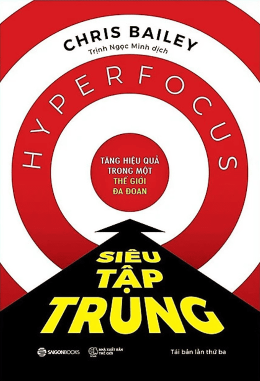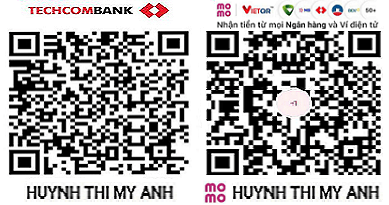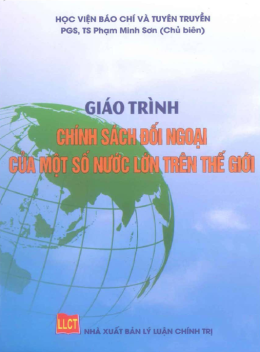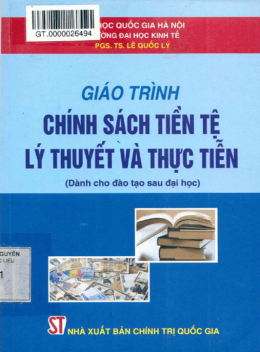
Siêu Tập Trung – Web Tải Sách Miễn Phí Ebooks PDF
Giới thiệu & trích đoạn ebook
Sách Siêu Tập Trung của tác giả Christ Bailey mời bạn thưởng thức.
CHAPTER 0. WHY FOCUS MATTERS
Attention Is Everywhere
m writing these words over the sounds of clanging cutlery and muffled conversation at a small diner in Kingston, Ontario, Canada.
I’ve always been a fan of people-watching. There’s so much to take in -how they dress, walk, converse, and act when they’re either around or not around others. At a busy café, or at a diner like this, it’s fun to see personalities collide like particles in an accelerator; to observe a guy’s personality change when he switches from talking to his friend to chatting up the waitress; to watch the personalities of waitstaff shift when serving each table, adapting to large families, young couples.
In focusing on other people, I’ve made a lot of observations about what those people are focusing on. In any given moment, we are all focusing on something, even if we’re just lost in our internal thoughts. Let’s take a glance through the diner.
I turn my attention first to the two twentysomething girls at the table to my left, who are mostly focusing on their smartphones instead of each other. Between bouts of texting, they flip their phones facedown on the table. This, it seems, is a pretty pointless gesture-they’ve picked them back up thirty seconds later. While I can’t make out their every word, I can tell they’re skimming the surface of the conversation they could be having. They’re with each other in person, but their attention is elsewhere.
Or take the couple across the room. They’re engrossed in a conversation fueled by hot coffee and buttermilk pancakes. They were engaged in relatively quiet small talk when they arrived, but their conversation soon became more animated. Unlike the girls, this couple has focused only on each other since sitting down.
A catchy Ed Sheeran song comes on over the restaurant’s speakers, and my attention is drawn to the two guys sitting a few tables over from the couple. One of them subtly taps his foot to the beat while his friend orders. The foot tapper is presumably spreading his attention across three things: the song, what his friend is ordering, and his own breakfast decision. After he orders the Three Egg Express, when the server asks how he’d like his eggs prepared, he directs his attention inward, seemingly recalling how he usually takes them. He orders scrambled.
At the bar are a few strangers making idle conversation while watching last night’s football highlights. I find it especially fascinating that millions of people around the world, including these three guys, are fixated on an eleven-inch piece of tanned cowhide. As I watch, one of the guys cocks his head, lost in thought. Then, as though a shock wave was traveling through his body, he rushes to capture an idea in his pocketed notepad. While he was lost in a daydream, and to the tune of football highlights, an insight struck from out of the blue. He had a eureka moment.
Or take me, sitting here with my laptop. This morning, as I sip coffee and nibble home fries, I’ve been able to focus more deeply on my work and have more energy to burn. My morning meditation may have helped-I find I’m able to write more words when I take part in this ritual (40 percent more, by my calculations). I left my phone at home so I could write distraction free, and so my mind could rest on the walk to the diner, and wander. As I’ll discuss later, disconnecting is one of the most powerful ways to spark new and innovative ideas. The music playing on the restaurant speakers is catchy, but not enough to be distracting. I’m not here for the soundtrack, though, and also chose this diner over my favorite café because there’s no wi-fi-constant connectivity is one of the worst disruptions to our focus and productivity. As the last few paragraphs demonstrate, I am a bit distracted by the environment and the people it’s hosting, but they’re serving as good fodder for this introduction.
This restaurant scene is a handy illustration of a revelation I had awhile back: attention is all around us. Once you see it, you can’t unsee it. Everyone awake on the planet, in this one moment-whether they’re eating breakfast, working, or spending time with their family is focused on something.
Attention is the backdrop against which we live our lives wherever we go and whatever we do, even if we’re just noticing the thoughts in our head.
t has been a few years since I first began to explore how we can not only focus better but also think more clearly. While this is tough to admit, especially as someone who was making his living as a “productivity expert,” I started to notice my own increased distraction, especially as I accumulated more devices. I had never been so busy while accomplishing so little. I had grown restless with boredom and a lack of stimulation and was trying to cram as much into every moment as I could. I knew that my brain never functioned well when I was trying to multitask, but I felt compelled to do it anyway. Working with my email client open and my smartphone on my desk was simply more appealing than trying to concentrate on one or two simple things. For me, this book was born out of necessity: I wrote it because I needed it.
When I get excited by a new idea, I typically order dozens of books on it and nerd out about that topic. Focus has been my most recent fascination. This includes how we can best manage the distractions around us; multitask more effectively, if that’s possible (it is); battle our resistance to focusing on tasks that make us procrastinate; and also better unfocus so that we can genuinely relax and recharge. In my reading, I found an awful lot of information-advice (often contradictory) that was fun to read but ultimately didn’t help me progress my work and life forward.
I then turned to the actual scientific research-scores of academic studies and decades of documentation dedicated to learning how we best focus. As I carefully read every study I could find, the “Focus” folder on my computer became massive. I amassed tens of thousands of words of notes and began to identify the most practical, tactical lessons from them. I started speaking to the world’s foremost attention researchers to get to the bottom of why we get distracted so easily and discover how we can get our stubborn minds to focus in a world of distraction. And I started to experiment with the research myself, to see if it was actually possible to get a grip on my focus.
Sách liên quan

Donate Ủng hộ chúng tớ 1 ly cafe
Nhằm duy trì website tồn tại lâu dài và phát triển, nếu bạn yêu thích Taiebooks.com có thể ủng hộ chúng tớ 1 ly cafe để thêm động lực nha.
Bạn cần biết thêm lý do để ủng hộ Taiebooks.com ?
- Website cần duy trì tên miền, máy chủ lưu trữ dữ liệu tải ebook và đọc online miễn phí.
- Đơn giản bạn là một người yêu mến sách & Taiebooks.com.










